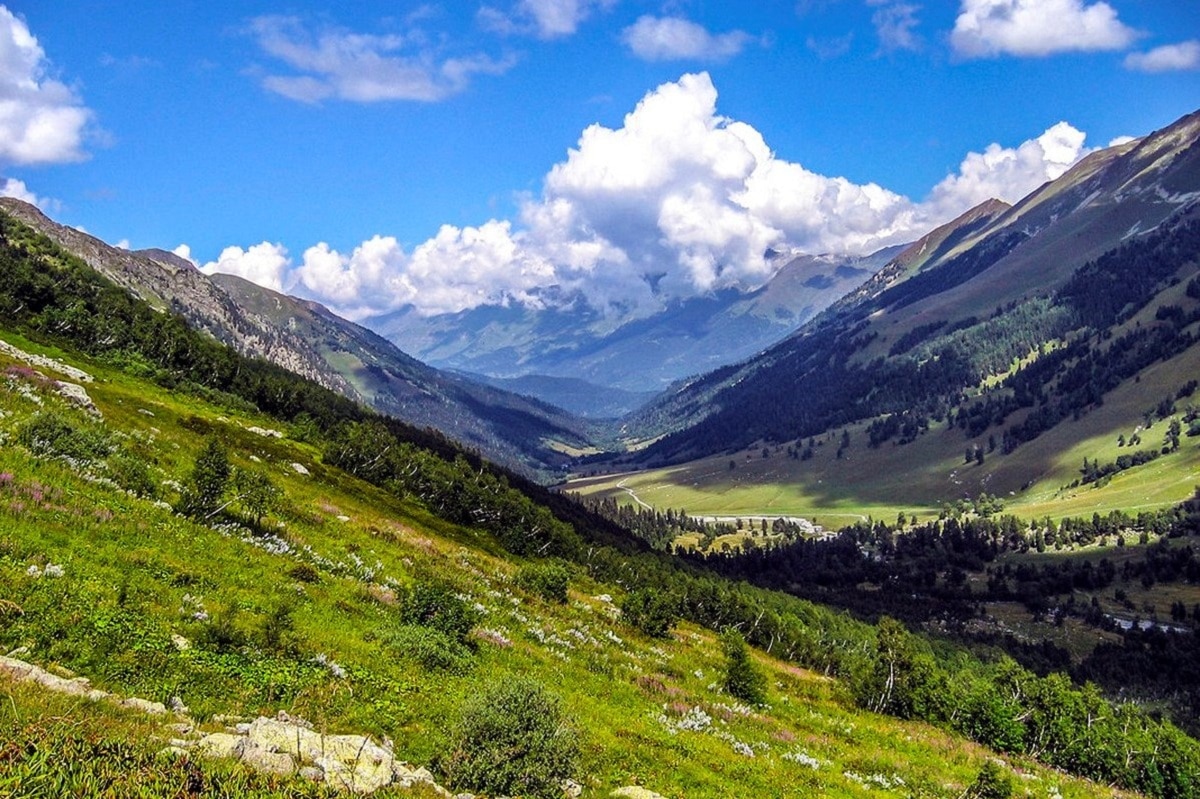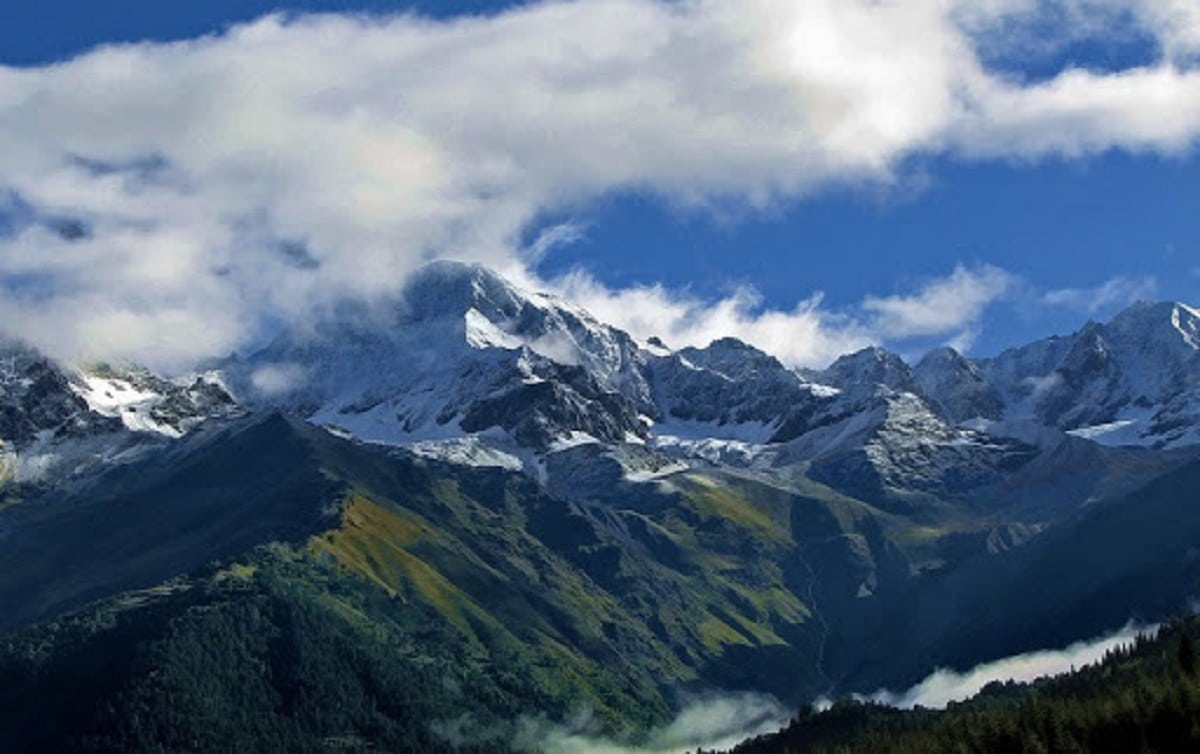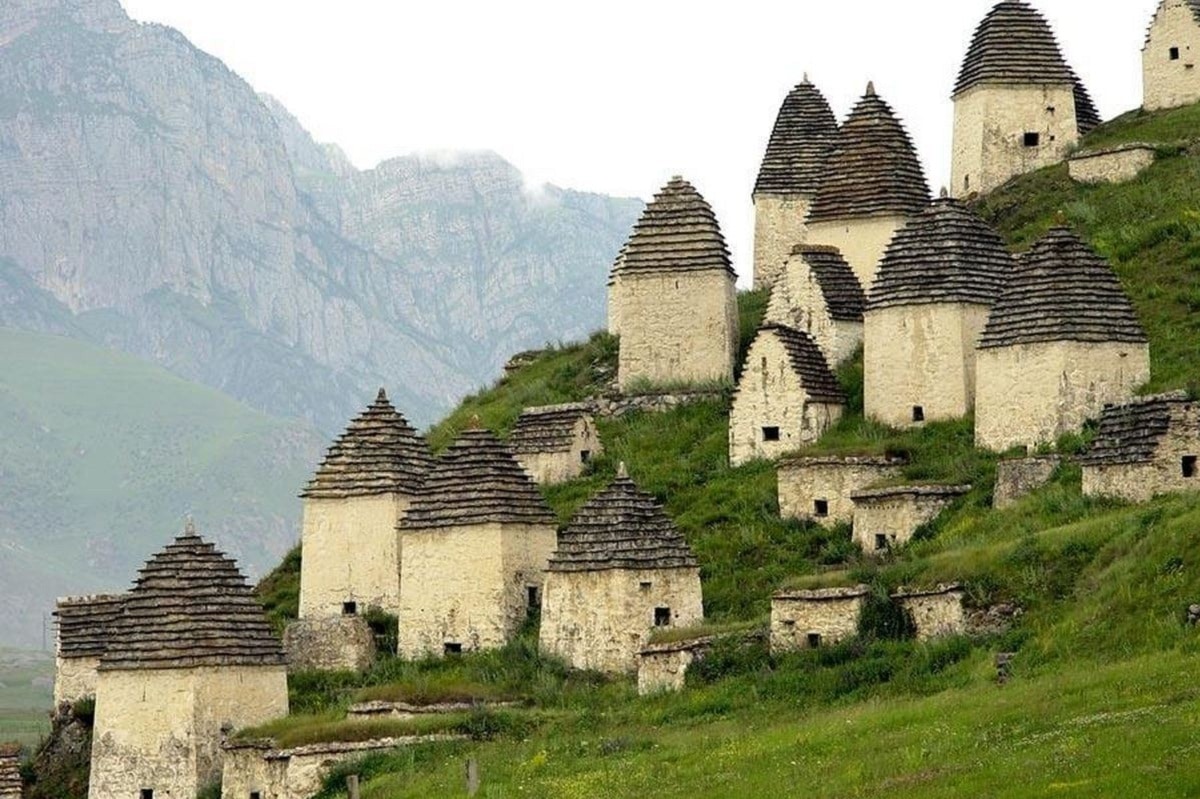
One of the best known mountains in the world for being considered as the continental division between the continent of Asia and Europe are the caucasus mountains. It is one of the highest mountain ranges in Europe and has several peaks that exceed 4.000 meters in height. The mountain range is located in this region between the Black Sea and the Caspian Sea. This entire area has a great linguistic and cultural variety since it has been a meeting place for trade between peoples for more than 2.000 years ago.
From this article we are going to tell you all the characteristics, origin, formation and geology of the Caucasus Mountains.
Key features

Six countries have some mountains in their territories: Georgia, Armenia, Iran, Turkey, Azerbaijan and Russia, in addition to the Autonomous Republic of Chechnya, Dagestan, Ayaria, Adygea, Ingushetia, Kabardia-Balkar, Karachay-Cherkesia, Nakhichevan and North Ossetia. The southern slopes of the mountains are dominated by Armenia, Georgia and Azerbaijan, and their ethnic and linguistic origins are very different.
For many years, various ethnic groups and minorities have been fighting for independence or autonomy, causing the area to be spattered with great problems and battles. During the Caucasus War of 1817 to 1864, the Russian Empire annexed several areas in the north, and peace cannot be guaranteed even today.
It is a mountain range, although its height can rival that of the Alps. On average, their peaks tend to be higher, between 2.000 and 3.000 meters above sea level. It is estimated that there are more than 20 peaks in the Caucasus that are higher than Mont Blanc, the highest mountain in the Alps. In contrast, the highest peak in the Caucasus Mountains is Mount Elbrus, which stands at about 5.642 meters above sea level.
Geological division of the Caucasus

This mountain system stretches from Southeast Europe to Asia from the east coast of the Black Sea to the Caspian Sea, from east to west. Its width is variable, up to 160 kilometers. The altitude of the mountain range increases from the extremes, and it is in the central section that the highest peaks are found, including Mount Elbrús.
It is geographically divided into the Greater Caucasus in the north and the Little Caucasus in the south. The Greater Caucasus is the largest part and the main mountain range in the entire system. It stretches from the Taman Peninsula to the Absheron Peninsula in the Caspian Sea and is divided into three parts: the Western Caucasus, the Middle Caucasus, and the Eastern Caucasus. The Greater Caucasus and the Lesser Caucasus are separated by the Transcaucasus depression, which is a parallel valley with a width of about 100 kilometers, which connects the Black Sea coast and the Caspian Sea coast.
Caucasus climate
The climate and topographical conditions make most of the length of its mountains more desolate than the Alps. The areas near the Black Sea are more humid; in contrast, the drier Caspian Sea makes the eastern zone have an arid or semi-desert climate. In the western mountains the climate becomes subtropical, so the climatic conditions in the east and west are actually opposite.
There are glaciers in the west and in the center. The glacier line usually begins between the 2.800 and the 3.000 meters. However, the Lesser Caucasus does not have glaciers like the Greater Caucasus. The small mountains that separate the depressions of Transcaucasia form a barrier between the different climates of the east and the west. The Lesser Caucasus is connected to the Greater Caucasus through the Lesser Lich Mountains, separated to the east by the Kura River.
Training

These mountains are very old. Most of the rocks date back to the Cretaceous and Jurassic, and the highest elevation is the Precambrian. Like most mountains in the world, they are formed by the collision of tectonic plates; in this case, from the Arab and Eurasian plates.
It all started when the Arabs started moving north until they collided with the Iranian plate and the Sea of Tethys closed. The movement lasted for a period of time and then collided with the Eurasian plate, which lifted the crust due to the enormous pressure between them. The Greater Caucasus Mountains began to take shape and the Lesser Caucasus Mountains finally took shape.
In the Cenozoic, the Little Caucasus volcano was active. With the exception of some volcanoes on the Absheron Peninsula, the volcanoes that still exist in the area are now extinct.
Flora and fauna
Because the Western Caucasus has a subtropical climate, the vegetation is denser than that of the Eastern Caucasus. In general, there are deserts, grasslands, alpine meadows, swamps, and forests along the mountains. According to the World Wide Fund for Nature (WWF), there are more than 10,000 species of plants in mixed forests, of which more than 1,500 are endemic plants, more than 700 vertebrates and 20,000 invertebrates. The Western Caucasus is one of the few mountainous areas in Europe with little human influence, where diverse ecosystems can be observed, among which are the alpine and subalpine grasslands that only inhabit wild animals.
In its forest, there are more than 10,000 species of plants, of of which more than 1,500 are endemic plants. Endemic flats are those unique to that place and cannot be found anywhere else. It is these plants that give additional value to the biodiversity of these mountains since they are exclusive species of these ecosystems. These are plants that have been able to adapt to these unique environmental conditions and cannot be found anywhere else.
As you can see, these mountains have a great deal of history and wealth and, therefore, are some of the best known in the world. I hope that with this information you can learn more about the Caucasus, its characteristics and the flora and fauna.
THE CAUCASUS IS A EUROASIAN REGION